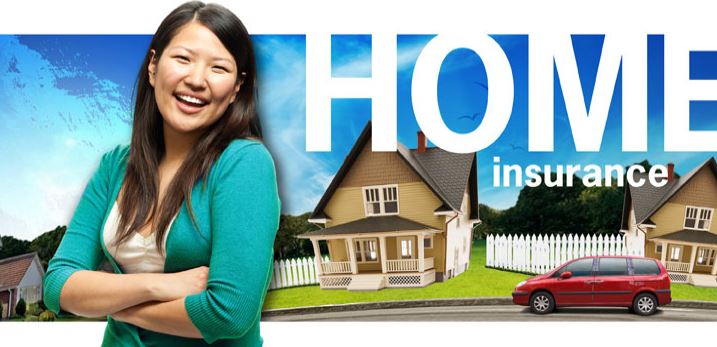Home insurance nj is a crucial topic for every homeowner in the Garden State, offering peace of mind in the face of unpredictable weather and unique regional risks. Whether you’re just settling into your first house or you’ve lived in New Jersey for years, understanding the ins and outs of local home insurance can help you protect your investment and save money in the long run.
From coastal storms and flooding to coverage options and rate factors, navigating the insurance market in New Jersey can feel overwhelming. With so many providers and policy features to consider, knowing what to look for—and what to avoid—makes all the difference when it comes to safeguarding your home and finances.
Overview of Home Insurance in New Jersey
Home insurance in New Jersey plays a crucial role in protecting homeowners from the unique risks and property concerns found throughout the state. Whether residing in bustling cities, quiet suburbs, or scenic coastal towns, New Jersey homeowners turn to insurance policies to safeguard their dwellings, belongings, and financial well-being.
The primary purpose of home insurance in New Jersey is to provide financial coverage for damage to your property from covered perils, liability in case someone is injured on your premises, and alternative living expenses if your home becomes uninhabitable. Given New Jersey’s diverse geography, policies are designed to address a wide range of property types and risk exposures.
Properties Commonly Covered by Home Insurance in New Jersey

In New Jersey, standard home insurance policies typically protect:
- Single-family homes in suburban neighborhoods
- Townhouses and row homes, especially in urban and transitional areas
- Condominiums, with tailored coverage for individual units and shared spaces
- Multi-family residences owned by individuals (such as duplexes and triplexes)
Each property type may have special coverage needs, especially for condos or multi-family dwellings where additional association or landlord considerations might apply.
Common Risks Specific to New Jersey Homeowners

Despite its relatively small size, New Jersey faces a range of natural and man-made risks. Homeowners should be aware of the following prevalent threats:
- Hurricanes and tropical storms impacting coastal and inland areas
- Flooding, especially in low-lying communities and along rivers
- Nor’easters bringing heavy snow, wind, and ice in winter months
- Urban property crimes such as break-ins and vandalism
- Coastal erosion affecting homes near the Jersey Shore
Having a comprehensive home insurance policy tailored for New Jersey’s unique risks is essential for protecting both property and peace of mind.
Typical Coverage Options for NJ Homeowners
When shopping for home insurance in New Jersey, understanding standard policy components is vital. Most insurers offer a similar base level of protection, with optional enhancements available to address specific risks or personal preferences.
Standard Coverages in New Jersey Home Insurance Policies
Most policies include several fundamental protections:
- Dwelling Coverage – Pays for damage to the physical structure of your home from covered perils (like fire, wind, and vandalism).
- Personal Property Coverage – Protects personal belongings such as furniture, electronics, and clothing from theft or damage.
- Liability Protection – Covers legal and medical expenses if someone is injured on your property or you cause damage to another’s property.
- Loss of Use/Additional Living Expenses – Helps pay for temporary housing and extra costs if your home is temporarily uninhabitable.
Coverage Feature Comparison Among Top NJ Insurers
Comparing policy features is helpful when choosing between insurers. The table below highlights how major providers in New Jersey differ in their core offerings:
| Provider | Dwelling Coverage | Personal Property | Liability |
|---|---|---|---|
| Allstate | Extended replacement cost | Replacement value | $100k–$500k |
| State Farm | Guaranteed replacement cost | Actual cash value, optional upgrade | $100k–$1M |
| NJM Insurance | Standard replacement cost | Replacement value | $100k–$300k |
| Liberty Mutual | Extended replacement cost | Replacement value | $100k–$1M |
Additional Endorsements and Riders in New Jersey
Many New Jersey homeowners choose to enhance their policies with extra coverage options. Common additions include:
- Flood Insurance Endorsement – Especially important in flood-prone areas, as standard policies do not cover flood damage.
- Windstorm/Hurricane Deductibles – Specific deductibles or added protection for wind-related damage, essential near the coast.
- Water Backup Coverage – Covers damage from sump pump failures or sewer backups.
- High-Value Item Riders – Protection for jewelry, art, or collectibles beyond standard policy limits.
Customizing your home insurance ensures that you’re protected against both everyday risks and extraordinary events unique to New Jersey.
Factors Influencing Home Insurance Rates in NJ: Home Insurance Nj
Home insurance premiums in New Jersey can vary considerably based on several state-specific and personal factors. Understanding what influences your rate can help you make informed decisions and potentially reduce your costs.
Local Factors Impacting Premiums

Where you live in New Jersey has a direct impact on your insurance rates. Factors like proximity to the Atlantic coast, neighborhood crime rates, and local building codes all come into play. For example, homes closer to the ocean often see higher premiums due to increased risk of wind and water damage, while urban areas may have elevated rates due to theft or vandalism.
Home-Specific Influences on Rates, Home insurance nj
The characteristics of your property, along with your own claim history, also affect what you pay for coverage. Older homes, those built with certain materials, or properties with a history of frequent claims may be subject to higher premiums.
Summary Table: Key Factors Driving NJ Home Insurance Rates
The table below presents the major variables that determine rates for New Jersey homeowners:
| Rate Factor | Description | Effect on Premium | Example |
|---|---|---|---|
| Location | Distance from coast, flood zone status, neighborhood crime rates | High-risk zones increase rates | Shore homes cost more to insure |
| Home Age & Construction | Year built, building materials, roof age | Older or less resilient homes cost more | Victorian homes in Cape May carry higher premiums |
| Claims History | Frequency of past claims by homeowner or property | More claims mean higher future rates | Multiple water damage claims raise costs |
| Coverage Limits & Deductibles | Amount of protection and out-of-pocket costs when filing a claim | Higher limits raise rates; higher deductibles lower rates | Choosing a $2,500 deductible can reduce annual premiums |
Final Conclusion
Exploring home insurance nj reveals just how important it is to stay informed and proactive as a homeowner in New Jersey. By understanding local risks, choosing the right coverage, and taking advantage of available discounts, you can feel confident that your home is well-protected no matter what comes your way.
User Queries
Is home insurance required by law in New Jersey?
No, home insurance is not legally required in New Jersey, but most mortgage lenders make it a condition for granting a loan.
Can I get coverage for flooding with a standard NJ home insurance policy?
No, standard home insurance policies in NJ do not include flood coverage; you need a separate flood insurance policy.
How do I know if I need additional windstorm or hurricane coverage?
If you live near the coast or in a high-risk area, you may need extra windstorm or hurricane endorsements. Check your policy and talk to your agent to be sure.
What documents are needed to file a home insurance claim in NJ?
You usually need proof of loss, receipts or photos of damaged property, a police report if applicable, and your insurance policy information.
Does my home insurance cover mold damage in NJ?
Mold damage coverage is often limited or excluded in standard policies, but you can sometimes add extra coverage for an additional cost.
